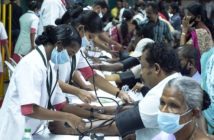Mumbai, the bustling metropolis known for its vibrant culture and dynamic energy, is facing a silent yet significant threat – the growing menace of rodents. Despite its towering skyscrapers and bustling streets, the city’s infrastructure is increasingly vulnerable to the pervasive presence of these vermin. From residential neighborhoods to commercial hubs, reports of rodent sightings and infestations have become alarmingly common, posing serious health risks to residents and visitors alike.
Understanding the Scope of the Problem
The extent of Mumbai’s rodent menace is staggering. According to a recent survey conducted by municipal authorities, the city is home to an estimated 15 million rodents, outnumbering its human population by a significant margin. These pests thrive in the city’s densely populated areas, finding ample food and shelter amidst the urban landscape.
Rodents are notorious for their rapid reproduction rates, with a single pair capable of producing hundreds of offspring in a year. Their ability to adapt to various environments and their scavenging behavior make them formidable adversaries in the battle against urban infestations.
Health Risks Posed by Rodents
Beyond their nuisance value, rodents pose serious health risks to Mumbai’s residents. These pests are known carriers of pathogens and diseases, including leptospirosis, salmonellosis, and hantavirus, which can be transmitted to humans through direct contact or contamination of food and water sources.
Leptospirosis, in particular, is a significant concern in Mumbai, especially during the monsoon season when flooding creates ideal breeding grounds for rodents. The bacteria responsible for leptospirosis thrive in stagnant water, increasing the likelihood of transmission to humans through contact with contaminated surfaces or waterways. Left untreated, leptospirosis can lead to severe symptoms, including fever, muscle pain, and in severe cases, organ failure.
In addition to direct health risks, rodent infestations can also exacerbate respiratory conditions such as asthma and allergies. Rodent droppings, urine, and dander can trigger allergic reactions and respiratory distress, particularly in vulnerable populations such as children and the elderly.
Seeking Solutions: Strategies to Combat the Rodent Menace
Addressing Mumbai’s rodent menace requires a multifaceted approach, encompassing proactive measures for prevention, effective pest control strategies, and community engagement initiatives. Here are some solutions to consider:
- Improved Sanitation Practices: Proper waste management and sanitation are essential for reducing rodent populations in urban areas. Municipal authorities should prioritize regular garbage collection and disposal, enforce cleanliness standards in public spaces, and educate residents about the importance of proper waste disposal practices.
- Sealing Entry Points: Rodents gain access to buildings through small cracks, gaps, and openings in walls and foundations. Property owners should conduct thorough inspections to identify potential entry points and seal them effectively using materials such as wire mesh, caulk, or concrete.
- Implementing Integrated Pest Management (IPM): IPM strategies focus on minimizing reliance on chemical pesticides and instead emphasize preventive measures, habitat modification, and biological control methods. Municipal authorities can collaborate with pest control agencies to implement IPM programs tailored to Mumbai’s unique urban environment.
- Public Awareness Campaigns: Education plays a crucial role in empowering residents to take proactive steps to prevent rodent infestations. Public awareness campaigns can raise awareness about the health risks associated with rodents, promote hygiene practices, and encourage community involvement in rodent control efforts.
- Strategic Use of Rodenticides: In cases where rodent populations pose a significant threat to public health and safety, targeted use of rodenticides may be necessary. However, caution must be exercised to minimize environmental impact and prevent unintended harm to non-target species.
- Collaborative Efforts: Addressing Mumbai’s rodent menace requires collaboration between government agencies, community organizations, businesses, and residents. By working together, stakeholders can pool resources, share expertise, and implement coordinated strategies to combat rodent infestations effectively.
Mumbai’s rodent menace is a pressing public health concern that demands urgent attention and concerted action. By implementing a combination of preventive measures, effective pest control strategies, and community engagement initiatives, the city can mitigate the risks posed by rodents and create a safer, healthier environment for all residents. With collective effort and commitment, Mumbai can reclaim its streets from the grip of the rodent menace and ensure a brighter, rodent-free future for generations to come.






